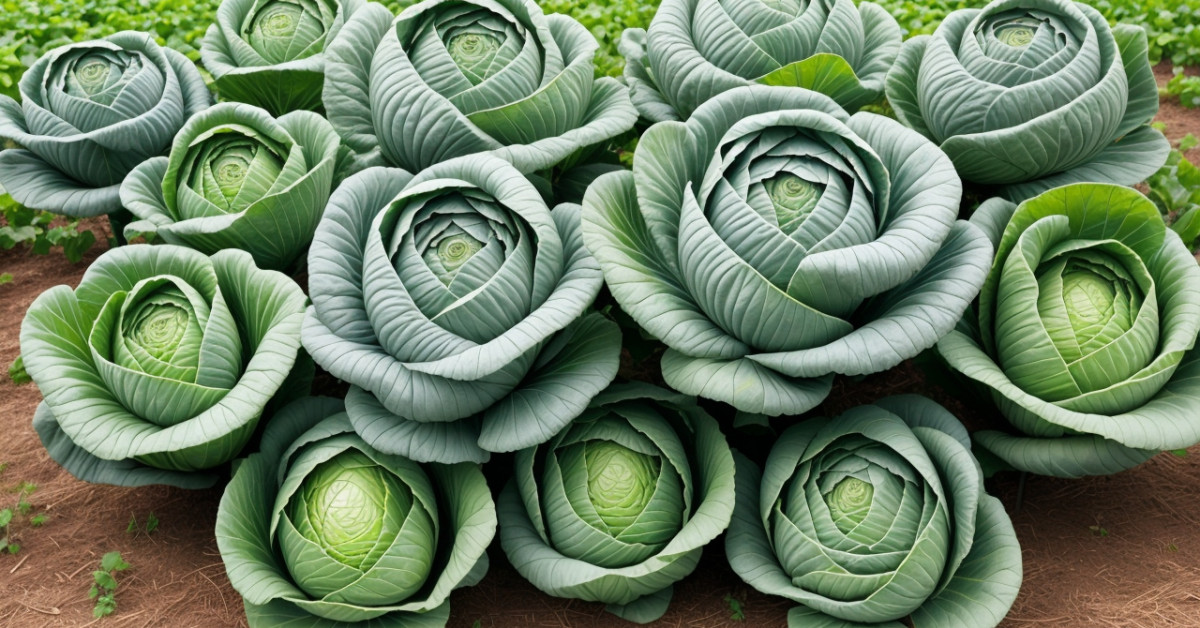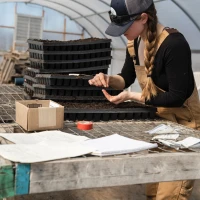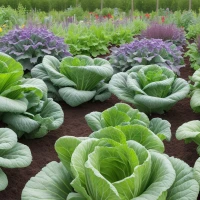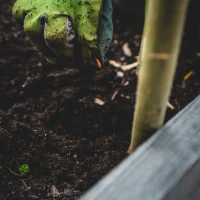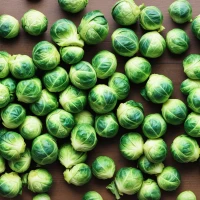Cabbage, a hearty and nutritious vegetable, is a staple in gardens worldwide. However, maximizing your cabbage harvest goes beyond simple planting and watering. Enter the ancient practice of companion planting – a tried and tested method to enhance crop yield, deter pests, and improve flavor, all while utilizing natural, sustainable gardening techniques. When it comes to cultivating cabbage, understanding the strategic alliances between plants can make a significant difference in your gardening success. Here’s a comprehensive guide to companion planting with cabbage, where we’ll uncover the profound relationships within your garden to help you reap the most bountiful and flavorful harvest yet.
Harnessing Companion Planting for Cabbage: A Symbiotic Success Story
Companion planting, the practice of growing different types of plants in close proximity for mutual benefit, is a cornerstone of organic gardening. This method not only optimizes space but also promotes a thriving ecosystem below and above the soil surface. By carefully selecting and positioning the right companions for your cabbage, you can naturally deter pests, enhance soil fertility, and facilitate better growth.
Companions to Encourage: Allies in the Garden
Certain plants, when grown alongside cabbage, can chickens have cabbage be particularly beneficial. These companion plants help in various ways – from repelling pests with their strong scents to attracting beneficial insects and even improving the underlying soil conditions. The right companions can significantly contribute to a flourishing cabbage harvest.
Allies in Pest Control
- Nasturtiums: Act as trap crops for aphids and other pests.
- Marigolds: Their strong fragrance helps in warding off unwanted nematodes and insects.
- Onions: The pungent aroma of onions effectively masks the scent of cabbage, confusing pests.
- Herbs: Aromatic herbs like thyme, dill, and mint can repel cabbage pests while attracting pollinators.
Soil Nutrition and Conditioning
- Beans: Legumes, such as beans, fix nitrogen in the soil, which is beneficial for cabbage.
- Underlined: Root crops like radishes can break up compacted soil, making it more hospitable for cabbage roots.
Improving Pollination and Growth
- Flower companions: Flowers attract beneficial insects that can assist in pollination.
- Tall plants: These provide shade and wind protection for the lower growing cabbage.
Plant Companions to Avoid: The Adversarial Plants
Not every plant is a good neighbor for cabbage. Some can chickens eat broccoli even inhibit growth or attract additional pests that could ruin your cabbage crop.
- Strawberries and tomatoes: These might spread blight to your cabbage.
- Grapes: Can stunt the growth of cabbage due to root-secreted chemicals.
- Mustards: They may attract pests that also feed on cabbage.
Implementing Companion Planting in Your Vegetable Garden
Creating a companion planting with cabbage strategy for your cabbage isn’t just about knowing which plants are friends or foes; it’s about understanding how to use this knowledge effectively within your garden space.
Planning Your Companion Planting Layout
Zoning is all-important; you want to ensure that each companion has enough space to grow without competition for nutrients and sunlight. Start by designing a plantation map that takes into consideration the height, spread, and root system of all selected plants.
Rotation for Resilience and Sustainability
Rotating the positions of your vegetables each year can prevent soil depletion and reduce disease carryover. A well-planned crop rotation involving cabbage and its companions can maintain a healthy balance in your garden.
Intercropping and Timing: Maximizing Garden Space
Intercropping involves planting quickly maturing plants like lettuce or spinach between rows of slower-growing veggies like cabbage. This method ensures continuous harvests and efficient use of garden space.
Detailed Cultivation Techniques for Cabbage and Its Companions
Fine-tuning your cultivation techniques can significantly affect the health and productivity of your cabbage companion planting and its companions.
Soil Preparation: Foundation for Success
- Amendment with compost: Rich, well-draining soil is crucial for healthy cabbage growth.
- pH balance: Cabbage thrives in slightly acidic to neutral soil conditions (pH 6.5–7.5).
Watering Strategies: Keeping Your Cabbage and Companions Happy
- Consistent moisture levels: Cabbages are water-loving plants, so ensure they get enough, but beware of waterlogging.
Mulching: Natural Blanket for Soil and Roots Protection
- Organic mulch: Wood chips or straw can help retain soil moisture and regulate temperature.
Strategies for Pest Management in Companion Planting
Pests pose a real threat to cabbages. However, when companion planting for brussel sprouts plants come into play, they can serve as natural pest deterrents without the need for harsh chemicals.
Biological Warfare: Let Nature Do the Work
- Encourage beneficial insects: Ladybugs and lacewings feed on common cabbage pests.
- Repelling with smells: Planting strong-scented herbs and flowers around cabbages can help keep many pests at bay.
Harvesting the Fruits of Your Labor: When and How to Harvest Cabbage
After nurturing your cabbages and their companions, understanding the timing and technique for harvesting is crucial for the best quality produce.
Recognizing the Signs of Maturity
- Firm headedness: Cabbages are ready when the heads are firm to the touch.
- Overall size and weight: Depending on the variety, a fully developed head can weigh several pounds.
Harvesting Techniques
- Cutting: Use a sharp knife to cut the head from the base of the plant.
- Regrowing: Some cabbage types can produce a second head after the first is harvested. Trim the leaves and allow the plant to regenerate.
Beyond the Cabbage Patch: Long-Term Strategies for Garden Prosperity
While you may be focused on the immediate season, it is important to consider long-term strategies to ensure continued success.
Crop Diversity and Succession Planting
- Diversity in planting: Growing a variety of plants can improve soil health and garden resilience.
- Succession planting: Plant new crops at intervals to extend your harvesting season.
Building a Healthy Garden Ecosystem
- Attract wildlife: Creating a friendly environment for birds, bees, and butterflies can improve pollination and pest control.
Closing Thoughts: The Symphony of Companion Planting
Companion planting with cabbage is akin to conducting a symphony. Each plant plays its part, contributing to the overall health and productivity of the garden. With the right knowledge and strategies, you can maximize your cabbage harvest and enjoy the bountiful rewards of a well-tuned green space.
By implementing these strategies, you’ll not only witness a visible difference in the quality and quantity of your cabbage harvest but also take pride in using sustainable gardening practices that benefit the environment. Companion planting is more than a technique; it’s a philosophy that honors the interconnectedness of nature and our role within it. So, as you plan your garden layout, consider the powerful alliances you can form below the leaves and between the rows, and watch your cabbages and their companions thrive in unison.
